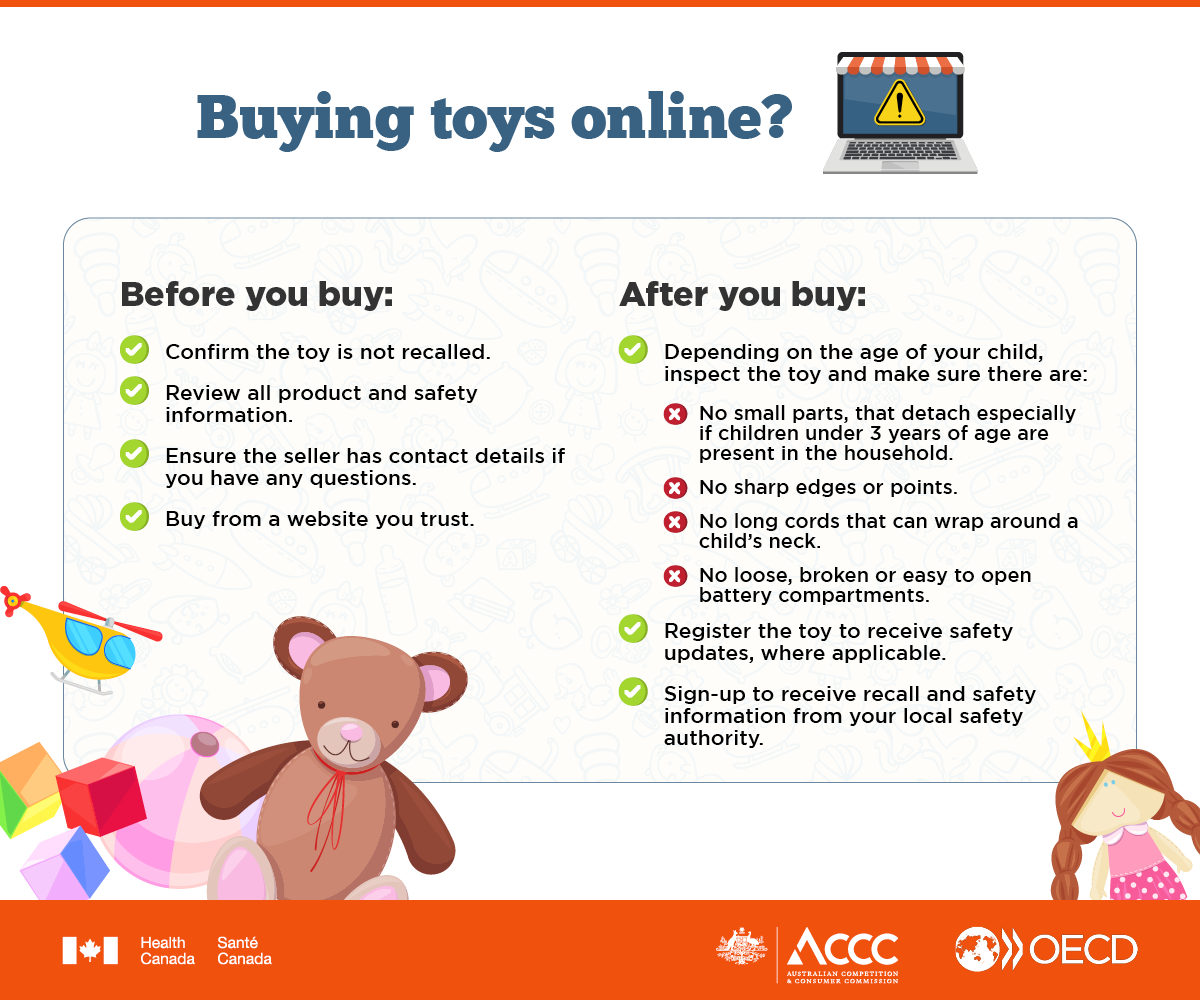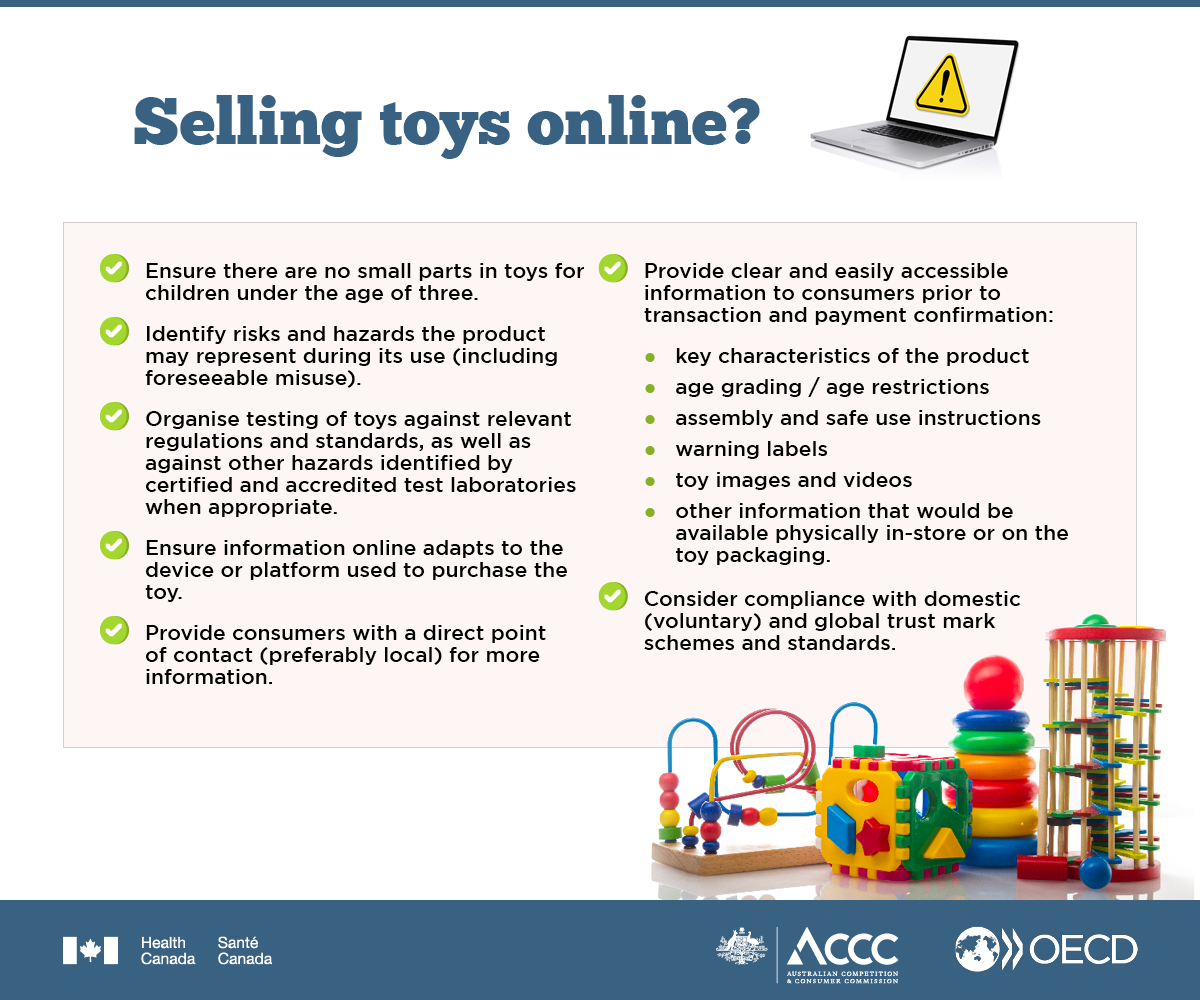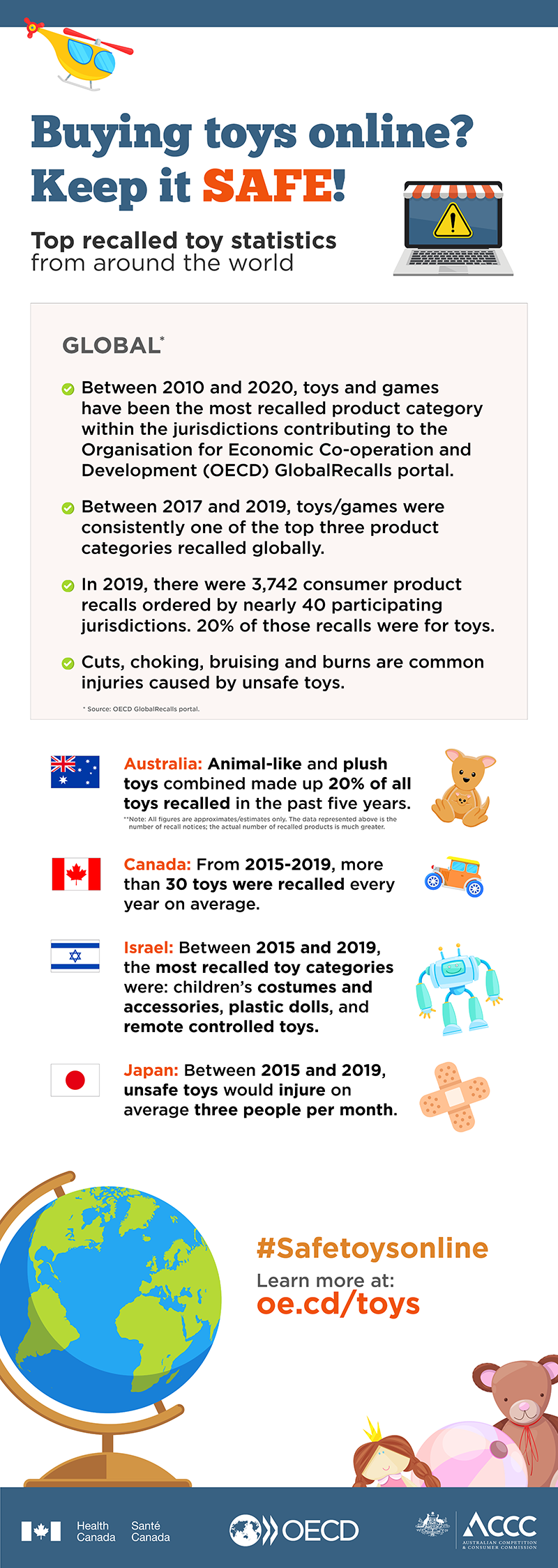This World Children’s Day, we urge parents and loved ones buying toys online to check that they’re safe and to report any product safety issues, as part of an international campaign on the safety of toys sold online.
The ACCC is co-leading the OECD global awareness campaign on the safety of toys sold online, which aims to help consumers make an informed decision when buying toys online, and enhance sellers’ understanding about selling safe toys online and removing unsafe toys immediately from sale.
One of the world's most recalled products
20% of consumer product recalls on the OECD GlobalRecalls portal in 2019 were for toys.
Around 1 in 10 consumer product safety recall notices in Australia are for toys. We receive, on average, almost 40 toy recall notices a year and have received almost 300 mandatory injury reports relating to toys over the last 5 years.
A large and growing global marketplace
In Australia in 2019, online retail spending accounted for 11.3% of the total retail spend for that year. It’s predicted that this figure will rise to 15% by the end of 2020, with the COVID-19 pandemic influencing an increased shift to online shopping and trading.
Tips for buying and selling toys online
Consumers buying toys online cannot physically examine the toy as they would when shopping in store – they have to rely on information that is available online. It’s important that consumers shopping online know what to look for to buy safe toys, and what to do if they purchase an unsafe toy.
For online sellers, it’s important to know how to reduce the risk of selling an unsafe toy and manage compliance.
Buying toys online? Keep it FUN!
- Find out: Check information about the seller. Ensure that the toy has not been banned or recalled. Check if it contains button batteries.
- Understand: Take note of safety warnings, information, labels and appropriate age
- Notify: Report safety issues and, where possible, register the product with the manufacturer
Checklist when buying toys online

Selling toys online? Keep it SAFE!
- Sell safe toys
- Assist consumers by providing accessible and reliable information before purchase
- Follow regulations that apply to the toys you sell – including mandatory standards, bans and mandatory reporting of injuries
- Engage with your supply chain, including online platforms and consumers, to ensure recalled and non-compliant toys are immediately removed from sale online
Checklist for selling toys online

More information
Buying & selling safe products online
COVID-19: Product safety at home




